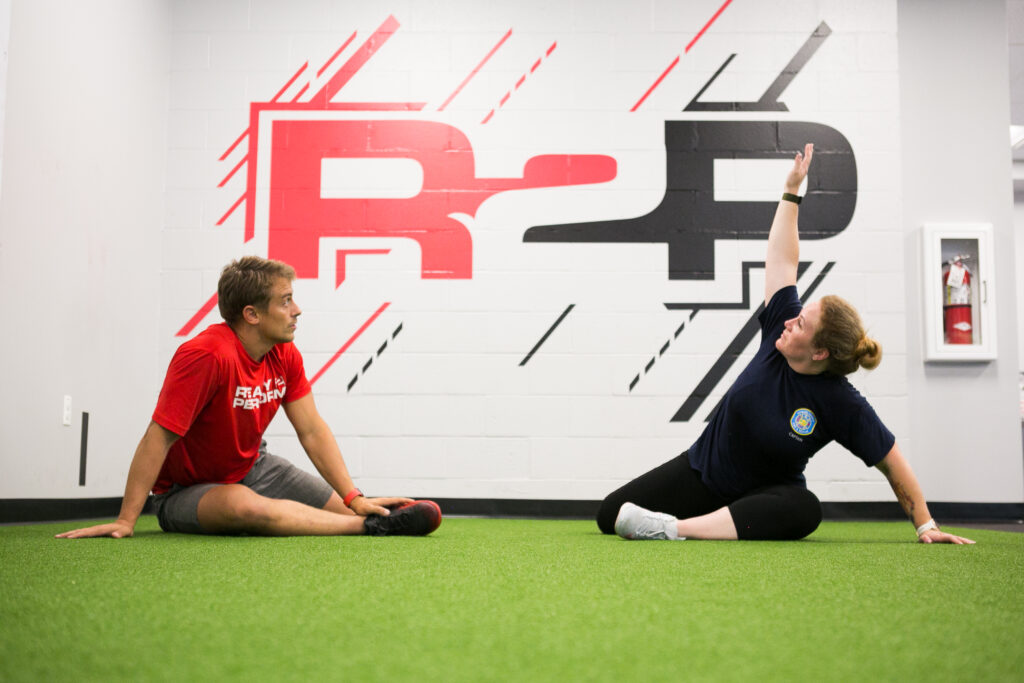Bulletproof Your Lower Back

Core & Mobility Drills for Pain-Free Training
Lower back pain is one of the most common complaints among athletes and fitness enthusiasts, especially those who train with higher intensity. Whether you’re deadlifting, squatting, or swinging kettlebells, your lower back is constantly engaged.
But if you’re experiencing persistent soreness or sharp discomfort after lifting, it’s a sign that something isn’t right. Poor movement patterns, muscle imbalances, or lack of mobility could be putting excessive strain on your lower back. Fortunately, with the right core strengthening and mobility drills, you can reduce pain, improve performance, and train without limitations.
Why Does Your Lower Back Hurt?
Lower back pain from lifting is often the result of weak core muscles, poor hip mobility, or improper movement mechanics. Common causes include:
- Core instability – If your deep core muscles aren’t strong enough to stabilize your spine, your lower back takes on the extra load.
- Tight hip flexors and hamstrings – Limited mobility in the hips or hamstrings forces your lower back to compensate, increasing stress on the area.
- Improper lifting form – Rounding your back during deadlifts, squats, or cleans places excessive strain on the lumbar spine.
- Overuse and fatigue – Training at high intensity without proper recovery can lead to inflammation and chronic tightness.
If you frequently experience lower back pain after lifting, it’s time to address the root cause.
How 2 Strengthen & Protect Your Lower Back
1. Strengthen Your Core for Better Spinal Support
A strong core is essential for maintaining proper posture and spinal stability during lifts. Instead of endless sit-ups, focus on deep core activation exercises:
- Dead Bug Variations – Builds core control without stressing the lower back.
- Planks & Side Planks – Strengthens the entire core and improves endurance.
- Pallof Press – Enhances core stability and resistance to rotational forces.
- Bird Dogs – Trains core control and coordination with minimal spinal stress.
2. Improve Hip & Thoracic Mobility
Limited hip mobility forces the lower back to compensate, leading to pain over time. Adding mobility work can help reduce strain and improve movement efficiency:
- Hip Flexor & Quad Stretch – Opens up tight hip flexors that contribute to lower back tension.
- 90/90 Hip Rotations – Improves hip mobility and reduces compensations during squats and deadlifts.
- Thoracic Spine Rotations – Enhances upper back mobility for better lifting posture.
3. Master Proper Lifting Mechanics
Technique matters. When lifting, keep these fundamentals in mind:
- Brace your core before each lift to maintain a neutral spine.
- Engage your glutes and hamstrings instead of relying solely on your lower back.
- Keep the bar close to your body to reduce spinal stress during deadlifts and cleans.
- Avoid excessive arching or rounding—both can lead to lower back pain over time.
4. Modify Workouts When Needed
If your lower back is feeling tight or sore, it’s okay to adjust your training. Consider:
- Substituting trap bar deadlifts instead of conventional deadlifts for better spinal alignment.
- Using Bulgarian split squats or sled pushes to build leg strength without excessive back loading.
- Reducing volume on high-rep barbell work and incorporating more single-leg or core-focused exercises.
5. Prioritize Recovery & Prevent Overuse
Recovery is just as important as training when it comes to avoiding chronic lower back pain.
- Take rest days and deload weeks as needed to allow your body to recover.
- Use foam rolling and stretching to release tight muscles.
- Get adequate sleep and hydration to support tissue repair.
Experiencing Lower Back Pain? We Can Help
If you’re dealing with lower back pain from lifting, don’t let it keep you from training at your best. A sports physical therapy evaluation can help identify the root cause and create a strategy to strengthen your core, improve mobility, and eliminate pain.
Book a free injury consultation today and get back to lifting pain-free.
Book Your Consult Today
- Dr. Zach Baker, DPT, SCS, Chief Clinical Officer

About Rehab 2 Perform
Rehab 2 Perform is a leading physical therapy and sports rehabilitation company dedicated to helping clients achieve optimal performance in their daily lives, whether they are athletes, weekend warriors, or individuals recovering from injury. With a team of highly skilled professionals across 11 state-of-the-art locations (soon to be 12), Rehab 2 Perform offers a personalized, evidence-based approach that emphasizes active rehabilitation and functional fitness. Find a Location near you, or Schedule Here.
